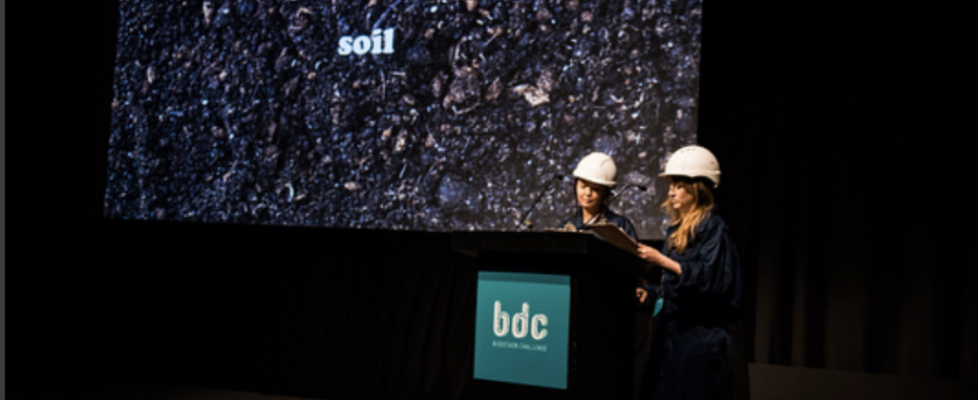The Biodesign Challenge
The task… BioDesign Challenge.
The brief… Biodesign in the Anthropocene.
The timeframe… 8 weeks to come up with a project that interrogates the value and pertinence of biodesign in the context of the Anthropocene. Seven MA Art & Science students joined the MA Material Futures studio. They paired up and got to work. This project was the first collaboration between MA Material Futures and MA Art and Science.
Liv Bargman (MA Art & Science) paired up with Nina Cutler (MA Material Futures) and together they developed The Quantworm Mine.
Here Liv reports on their process and the unexpected outcomes.
We had an intense 8 weeks of collaborating, experimenting, testing. After some initial conversations, Nina and I discovered we had common interests and common ground – specifically soil and its polluted state. Professor Carole Collet facilitated the project, and the crits were really helpful and rigourous. It was great to be working in such a stimulating and busy environment in the MA Material Futures studio, amongst some really great designers, thinkers and makers.
Our project, The Quantworm Mine, explores interspecies collaboration and the biodiversity of soil. Researching the power of earthworms to bioremediate contaminated soil in post-industrial sites, the two devised potential systems to harness this particular process.
In our first weeks of the project, we were introduced to the fast emerging and alternative fields of Biodesign and synthetic biology. With visits from Bento Lab at Central Saint Martins – we also visited Imperial college’s synthetic biology lab, run by Dr Tom Ellis.
Our MA Art and Science course leader, Heather Barnett, ran a workshop with slime mould encouraging us to collaborate and work with living systems.

Visit from Bento lab to the Material Futures Studio.

Workshop: extracting DNA from a banana.

In February, we visited a disused mine in South Wales and began to piece together Quantworm Industries System, where mining communities could be recast as quantum dot farms in which worms convert toxic ground into useful material. Current quantum dot production uses raw toxic materials and is not particularly sustainable; our project proposed a more natural production line, which also reverses damage done to the ground through decades of heavy industry.

Stevie the coal miner, explained to us the community spirit and comradery still felt from the mining industry.

The big pit coal mine, Blaenavon.

Within our proposition, eating the heavy metals on the ground the worms become biological producers of quantum dots, a material used in nano-technology for photo-voltaic cells. We discovered this research from a paper in Nature, by professor Mark Green at Kings College London. (Article by Wellcome Trust).
We had a final presentation of our projects. The work from the other teams were incredible. But only one team could go and we were chosen to represent Central Saint Martins.


In June 2017, we presented BioDesign Challenge Summit, at MoMA, amongst over 20 other international teams and about 27 judges. The projects were wide ranging in their approach: some were more solution/ product based; a handful were in the critical design camp.

Liv Bargman and Nina Cutler presenting their project at BioDesign Challenge Summit at MOMA, New York

We were announced as the winners and took home a trophy by artist, Luke Jerram. See the list of all the winning projects here.

Towards the end of the year, another opportunity arose for us to go to NY again. We were invited to speak at Biofabricate in December 2017 at New Lab, Brooklyn – an annual summit for the emerging world of grown materials.



Last week at CSM was Green Week, hosted by Plural Futures. Our project is displayed in the big windows until the end of February. We even have some quantum dots on display, kindly donated from Professor Mark Green’s lab at Kings College London.
And finally, our project will be in a new edition of Bio Design: Nature, Science, Creativity by William Myers, published by Thames & Hudson, out later in 2018.
